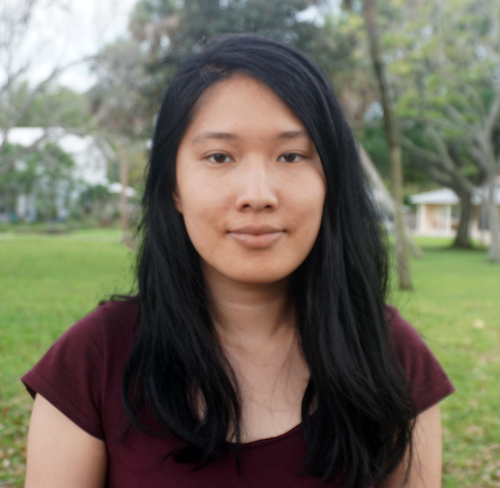When Archith Seshadri is reporting out in the field, his presence sometimes elicits reactions from people. Some are surprised to see an Indian American journalist.
“I think the fact that you see people that look like you, that can represent you, I think there is a level of comfort and a level of ‘Oh wow, I feel more comfortable sharing my story with you because you are like me,’” he said.
Seshadri said, even now as the Atlanta bureau chief/anchor for Nexstar Media Group, he’s the only Asian American reporter, even behind-the-scenes.
Seshadri’s experience is not unique. A new report by the Asian American Journalists Association found that in the top 20 TV markets, nearly 25% of local stations do not have any AAPI reporters on air.
From July to September 2021, the group analyzed 94 stations and compared the percentage of AAPI on-air staff to the demographics of their local communities. More than 70% do not have the on-air staff to be representative of their community’s AAPI populations.
Those numbers weren’t the only “disappointing” finding in the AAJA Broadcast Snapshot Project, said director of programs and partnerships Waliya Lari. The report’s authors were surprised by the lack of response from most newsrooms. After gathering data from staff pages, social media accounts and other public pages, AAJA asked stations to verify the information they had collected. Of the 94 stations they reached out to, only seven responded.
The lack of response was striking, Lari said, because many newsrooms say diversity and representation are important.
“You can say that these issues are important to you, but you’re not acting upon that intention. So that was really surprising to us,” she said.
Lari said some stations declined to verify the data because it was a “personnel matter.” Others flat-out refused or never responded. She speculated that one issue may have been that many companies do not keep track of newsroom demographics.
Other journalism diversity surveys — most notably the News Leaders Association’s annual effort to survey print and digital outlets — have faced similar issues. Earlier this year, NLA had to scrap its 2021 survey due to data collection issues. That survey had a participation rate of 10%.
The AAJA report’s origin came from the group’s desire to be more proactive in advancing equity, diversity and representation in news. Lari said the organization delved into the world of research to help solve problems that haven’t been identified yet. And in doing so, they found a dearth of data on newsrooms being representative of their communities.
“There’s been a lot of efforts, but newsrooms and news organizations don’t seem super keen on divulging that data,” she said. “So for us, we were like, ‘Let’s go out looking for it and see what we can find.’ … We can’t help newsrooms improve if we don’t know what needs to be improved upon.”
Being the only AAPI journalist at a station can be a very lonely experience, said local television reporter Nydia Han. In the early years of her career, she tried not to be “too Asian,” lightening her hair and limiting her pitches about Asian communities. Sometimes she didn’t pitch those stories at all.
“I was basically hiding my Asian self in plain sight,” Han wrote in an email. “I was on television every day but not fully seen and heard.”
After working in three different local markets where she was the only Asian American in the newsroom, Han arrived at 6ABC Action News in Philadelphia. There, she is one of three Asian American anchors. (The newsroom also has an Asian American assignment editor and an Asian American photographer).
Han said she and her colleagues have tried to shed light on issues related to racism and prejudice. In 2017, Han posted a video on Facebook responding to a driver who yelled “This is America” at her after nearly hitting her. That video went viral, and Nydia later turned the moment into a three-part digital series exploring race in America.
“After the rise in anti-Asian hate amid COVID, I feel an especially urgent sense of responsibility to bring my entire self to my work and am gratified by what happens when I do,” Han said in an email. “Thanks to my Asian American colleagues and I speaking up, 6ABC aired PSAs in support of our community.”
“It is critical to not only hire Asian Americans but to LISTEN to them and give them the resources to do the work that they are best positioned to do,” she said. “Diversity cannot be wallpaper.”
There have been many conversations around representation in newsrooms. This discussion was amplified in 2021 when a gunman opened fire at three metro Atlanta spas, killing eight people, six of whom were Asian women. After the shootings, AAJA expanded its guidance on coverage of anti-AAPI violence, even releasing a pronunciation guide video. AAPI journalists have said their direct knowledge and personal experiences have added needed nuance to their reporting that other journalists outside their communities may have missed.
“I think when you live and breathe that culture, and you have personal experiences, you can ask better questions,” Seshadri said.
Lari said AAJA hopes to use this report as a baseline, and the organization plans on conducting additional censuses in the future to track progress in AAPI representation.
“We’re really looking forward to this being the launching point for us to get into even more research, and really paint a picture of the landscape that’s out there in newsrooms across the country.”







